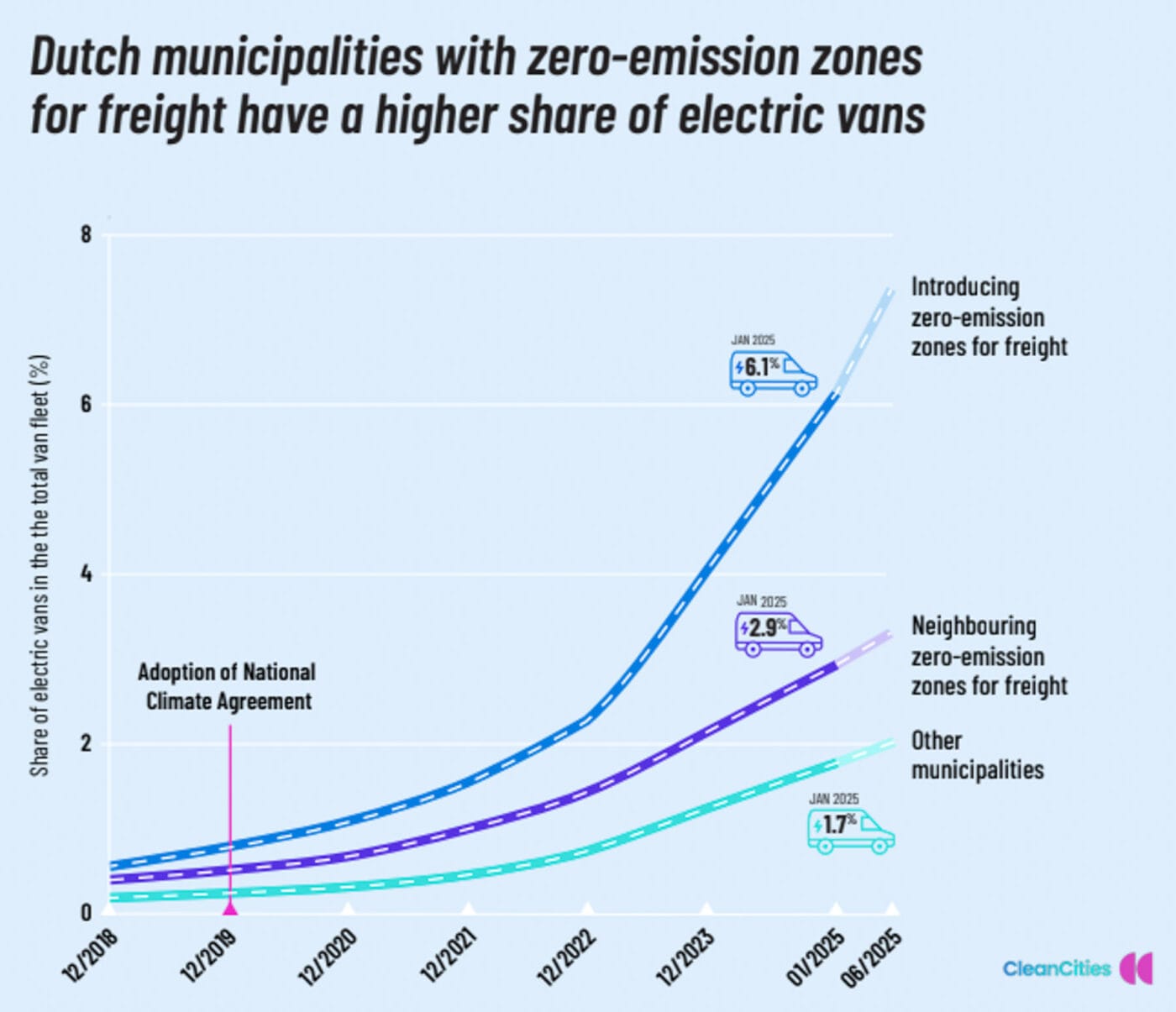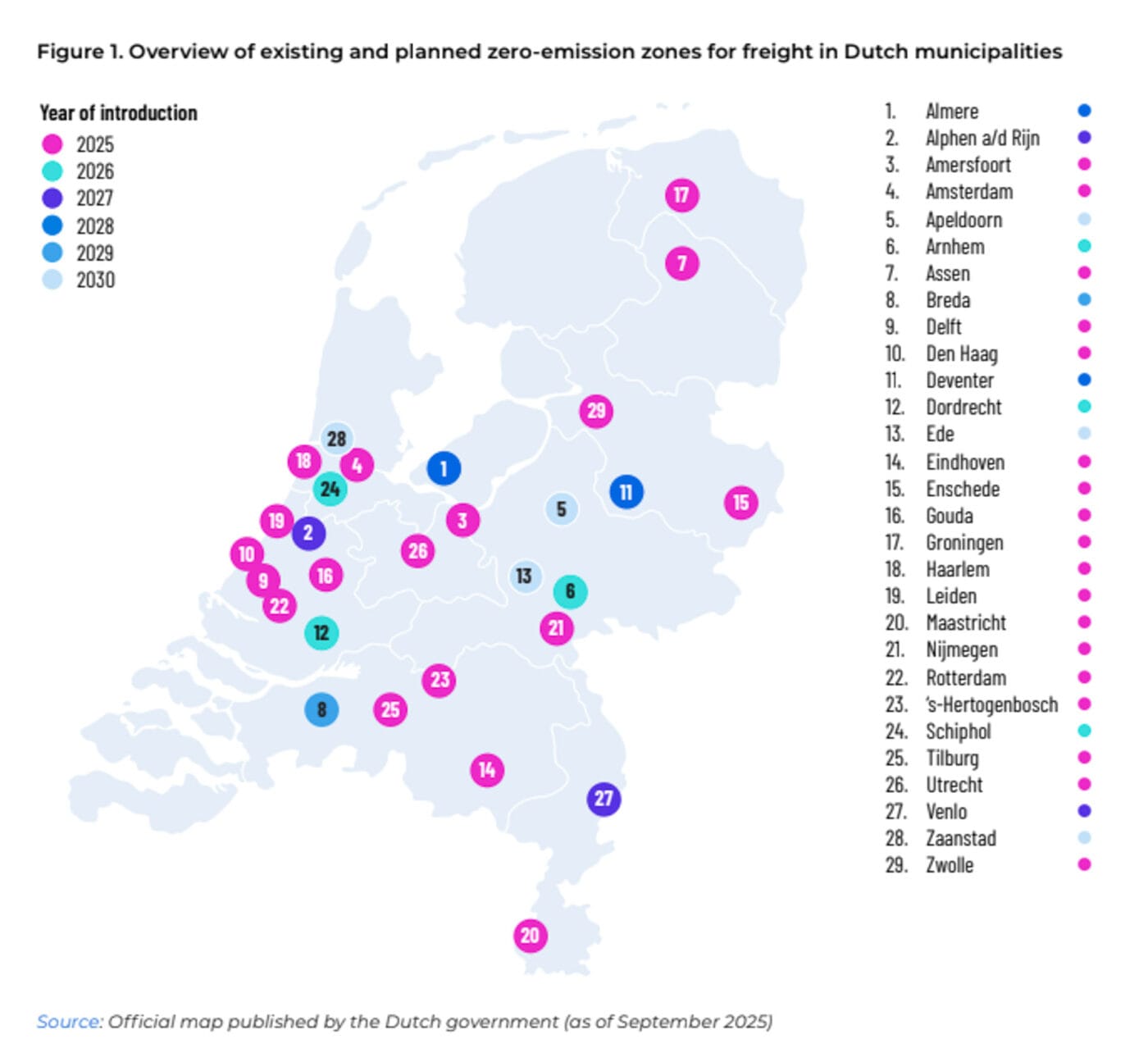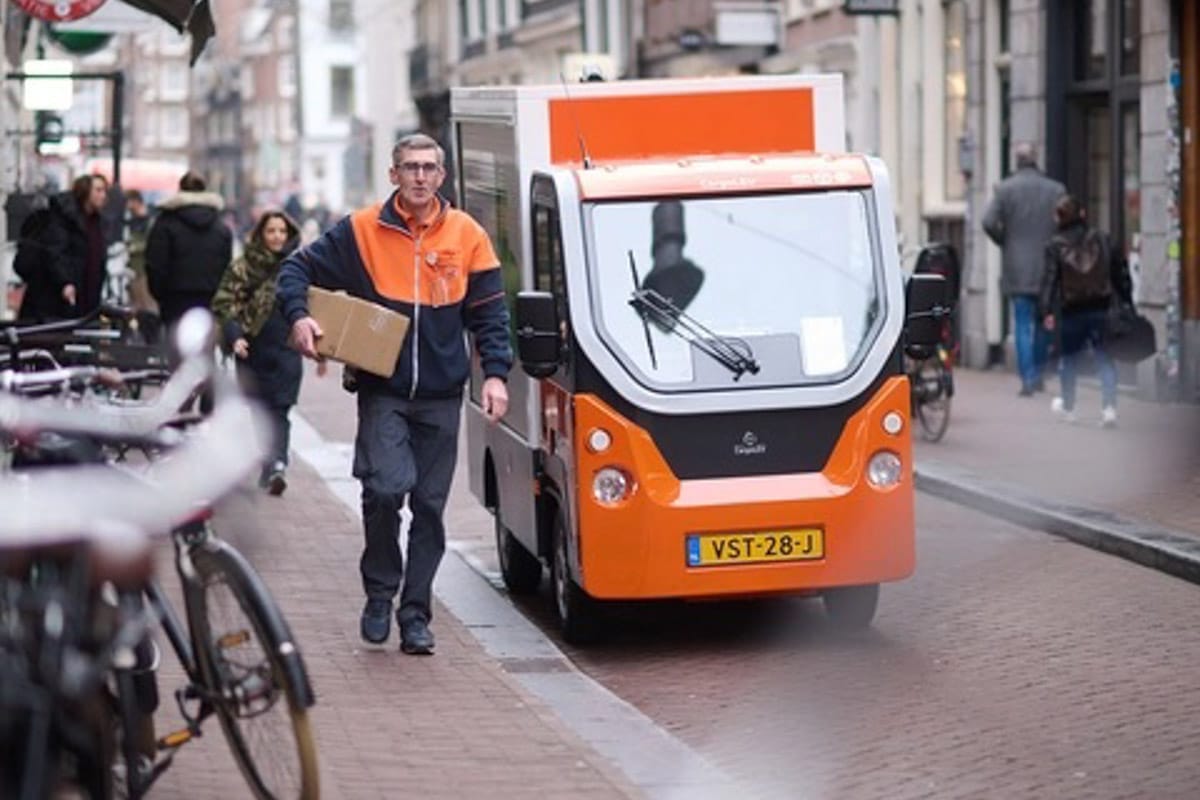Netherlands: Zero-emission zones lead to boom in electric vans and trucks
The Dutch ZEZ-F zones were introduced in January 2025 and now cover 18 cities. The effects are already clearly noticeable: according to Clean Cities, municipalities that have introduced ZEZ-F zones or simply border on such zones are seeing faster electrification and a significant decline in diesel vehicles. Diesel vehicles would thus be displaced from densely populated cities in particular.
This is particularly evident when looking at registration figures in a European comparison: in the first half of 2025, 78 per cent of new vans registered in the Netherlands were battery electric, compared to an EU average of only nine per cent. According to Clean Cities, sales of electric trucks in the Netherlands rose by 188 per cent compared to the previous year, accounting for almost one in five new electric trucks sold in the EU.
These are only new registrations, but the effects of zero-emission zones are already visible in the vehicle fleet: in municipalities with ZEZ-F and their neighbouring towns, the prevalence of electric delivery vans has increased more rapidly (6% and 3% respectively, compared to only 2% in areas without ZEZ-F). Clean Cities therefore describes the zero-emission zones for freight transport as ‘groundbreaking’ in its communication, as they are accelerating the transition to electric delivery fleets in the Netherlands and reshaping urban logistics.


Clear differences between cities with and without ZEZ-F
With the increasing proportion of electric delivery vehicles in ZEZ-F municipalities and neighbouring communities, the proportion of long-established diesel vehicles in this segment is declining – but only there. According to the new analysis, the Netherlands cannot rest on the successes of the ZEZ-F, as the number of diesel vans continues to rise in other locations. Other operators, such as PostNL, are also delivering their shipments electrically in cities that do not have ZEZ-F.
“Experience in the Netherlands shows that zero-emission zones are bringing about a decisive change. They provide clear rules and the certainty that companies need to invest in electric fleets,” says Barbara Stoll, Director of the Clean Cities Campaign. “And they mean that our city centres can become “living neighbourhoods” for everyone by reducing pollution, reducing noise and creating healthier, safer streets.”
However, Clean Cities also notes that the introduction of a ZEZ-F alone is not enough to achieve the desired results. “Success depends on a combination of regulation and financial support: Dutch municipalities received special subsidies, while companies had access to national subsidies for electric vans and trucks, tax breaks and exemptions during the transition phase,” the organisation says. And, of course, violations of the ZEZ-F must also be punished: “Enforcement is ensured through number plate recognition and fines.”
In fact, it seems that a lot can be achieved through subsidies for purchases. The majority of Dutch companies that have switched to electric vehicles as a result of the ZEZ-F confirm that the total cost of ownership for most electric vans is already lower than for comparable combustion engines. However, the higher purchase costs remain a hurdle, as margins in the logistics business are often very low.
Based on the experiences in the Netherlands, Clean Cities has drawn up a number of recommendations for cities and national governments:
- They should announce ZEZ-F in city centres with long, gradual introduction periods, offering
- clear incentives for electric or pedal-powered vehicles,
- ensure coordination between national and local regulations to avoid a patchwork of measures, and finally
- support companies with charging infrastructure and practical advice.
Source: Info via email
This article was first published by Sebastian Schaal for electrive’s German edition





0 Comments